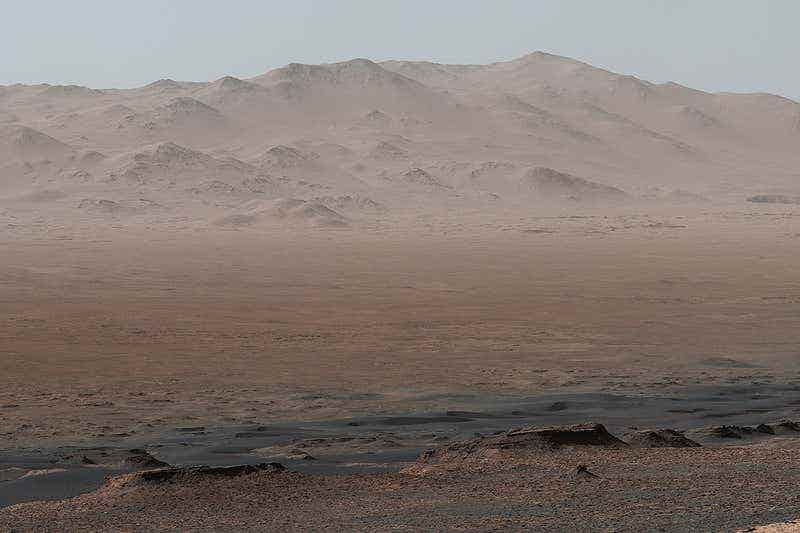Clays found in Martian crater hint that the planet was once habitable
Parts of Mars may have been habitable for thousands or even a million years, based on analysis of clays found in one of its craters

[June 29, 2021: Jonathan O’Callaghan]
Parts of Mars may have been habitable for thousands or even a million years, based on analysis of clays found in one of its craters that could only have formed in a stable life-friendly environment.
In 2016, NASA’s Curiosity rover used its onboard drill to sample the Martian surface inside Gale Crater, which it is exploring. Studying the sample with X-rays using the rover’s onboard instruments, scientists found the presence of a particular clay mineral related to so-called glauconitic clays, which point to a period of habitability in the crater’s past.
While the site was already thought to have contained an ancient lake for up to 10 million years about 3.5 billion years ago, when the planet’s atmosphere was thicker and able to support liquid water on its surface, it was unclear if this lake would have had suitable conditions for life, such as a moderate temperature and neutral acidity.
However, the presence of mineral remnants of glauconitic clays is a promising sign. Their presence on Mars suggests that stable conditions – with temperatures around -3 to 15°C and water with a neutral pH – may have existed on Mars in Gale Crater, possibly for up to a million years.
“Glauconitic clays can be used as ‘a proxy’ for stable conditions,” says Elisabeth Losa-Adams at the University of Vigo, Spain, the study’s lead author. “The conditions under which these minerals form are friendly for the presence of life.”
While these glauconitic clays are an indicator of habitability at this time, they aren’t evidence of life itself. Finding such evidence is the goal of another NASA Mars rover – Perseverance – now exploring Jezero Crater. Curiosity’s findings in Gale Crater are a promising sign that Perseverance may strike lucky.
“The existence of glauconitic clays could provide a new understanding of the evolution of the ancient Gale Crater lake,” says Losa-Adams.
Like these kind of feel good stories? Get the Brighter Side of News' newsletter.
Tags: #New_Discovery, #Mars, #Life, #NASA, #The_Brighter_Side_of_News
Joseph Shavit
Head Science News Writer | Communicating Innovation & Discovery
Based in Los Angeles, Joseph Shavit is an accomplished science journalist, head science news writer and co-founder at The Brighter Side of News, where he translates cutting-edge discoveries into compelling stories for a broad audience. With a strong background spanning science, business, product management, media leadership, and entrepreneurship, Joseph brings a unique perspective to science communication. His expertise allows him to uncover the intersection of technological advancements and market potential, shedding light on how groundbreaking research evolves into transformative products and industries.



